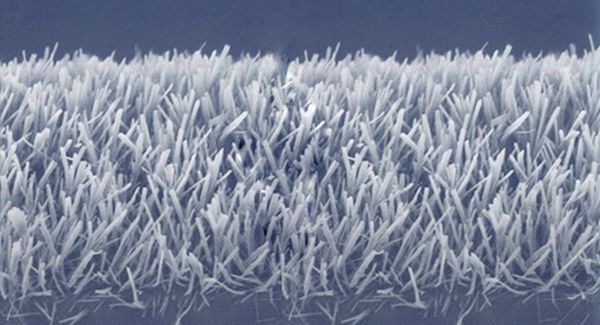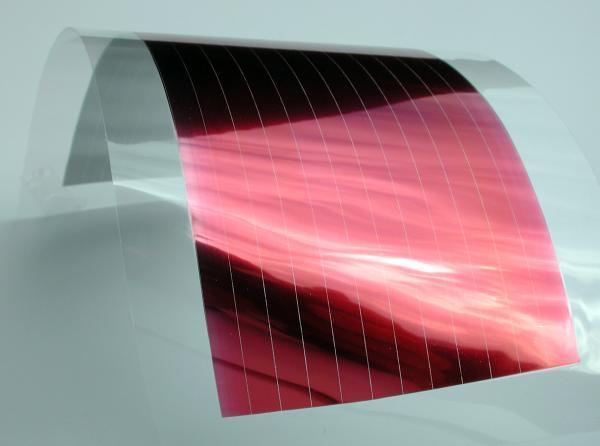Solar power today
Solar energy, as a means of sustainable and clean energy, is fast gaining ground as more people realize the need to search for alternative means of power. Its density doesn’t quite come close to that of fossil fuels, but with advancements in technology it is hoped that the future isn’t far off when we will see it replacing conventional fuel sources. Despite its many advantages, however, harnessing solar power isn’t always cheap. PV panels can be expensive and the land area required to set up large scale installations is also substantial. But, as the world moves towards replacing conventional fuel sources with solar energy, solar cells are seeing a reduction in cost and newer methods of harnessing this abundant form of energy means that we may not need to utilize as much land.
In 2011, Bloomberg New Energy Finance put the cost of solar cells at $1.80 per watt for the year 2010. It also estimated that the price would drop to $1.50 per watt in 2011. While the going may appear slow, PV panels do pay back investors in about 8 to12 years. To ensure stakeholders don’t lose out, it has now become common for investors to set up panels for free in exchange for long term power purchase agreements. In 2007, half of the commercial systems were established in this manner. With carbon prices pegged at $50 for a ton, the cost of coal fired power is increasing. This will see the cost of PV panels decreasing even further and pushing solar cells to even greater popularity. According to an estimate, 2011 saw investments in renewable sources trump that of carbon based power generators.
Needed improvements
Despite its benefits, there’s always room for improvement. Solar energy can’t be harnessed at night and to ensure maximum input, clear and sunny skies are necessary. Storage systems also need to be improved so that there is an interrupted power supply when needed. Well designed thermal storage systems can regulate heating and cooling requirements, shift time of use to off peak hours and lower peak demand. Heat storage materials like Glauber’s salt and paraffin wax can increase the efficiency of storage systems as well. They’re cheap and can deliver temperatures of 64 degrees centigrade, which is domestically useful.
Grid connected systems are especially useful for conserving energy. If excess power is harnessed and supply exceeds demands, the surplus is rolled back to the grid and stored for future use.
What needs to be done is to reduce the cost of solar energy harnessing equipment. This can be accomplished via government incentives and utility rebates. But, given the rise in use of PV panels, costs are estimated to come down with time and this will greatly aid in the shift from conventional energy sources to renewables.
Taking help at a nano scale
Experts are tinkering around with the idea of experimenting with harnessing solar energy on an atomic scale. These are interesting times and it would be great to see nanotechnology being successfully applied to solar energy harvesters.
a) Electricity from a thin film

A nanotechnology trade fair held in Tokyo a few years back saw Germany’s Fraunhofer Solar Energy Systems presenting their latest invention: a thin filmed sheet of organic solar cells. The invention claimed to be cheaper than indium tin oxide which is used to reflect solar energy. The thin film uses poorly conductive polymer electrodes which are connected to highly conductive metal layers. Complementary positive charges allow photons in the sun’s rays to penetrate the solar cells which are absorbed by a semi-conducting material to generate electricity. The thin film could reduce the need for expensive light absorbing materials to be used to create solar cells. This in turn could drastically reduce the cost of PV panels, which can then be implemented on a mass scale.
b) Nano Vent Skin

The Nano Vent Skin developed by Agustin Otegui is one multi-purpose material. It sheathes buildings in a glittering solar weave and is dotted with micro turbines. Its modular composition allows for retrofitting so there’s no need to construct new buildings in order to make use of the skin. Moreover, the technology uses micro organisms that absorb CO2 from the air. Using a three pronged approach, the Nano Vent Skin harnesses sunlight via a PV layer and transfers it to storage units; micro turbines used polarized organisms, which create chemical reactions to generate power; and the micro organisms in the turbines suck up carbon dioxide to clean the air.
c) Nanotechnology betters color and cost of PVs

Soon, we may see colorful solar cells that are a quarter of their existing size. Researchers at Ohio State have successfully developed a technique that decreases the size of PV panels while making them good to look at. They used ruthenium and titanium or zinc oxide particles to absorb sunlight and for the transference of power, made use of nanowires implanted in the cells. So far, the researchers have managed to produce half the power gained from conventional PV panels, which are black in color. To heighten efficiency, they propose to make use of nanowire trees which will also reduce costs.
d) Researchers use nanotech to make ‘solar fuel’

A team from various universities is looking to create a solar nano cell comprising of two light absorbers. One consists of quantum dots of semi-conductor material that could absorb the various shades of the solar spectrum, which means that it has the ability to harness higher levels of solar energy. The second absorber consists of porphyrin molecules.
The quantum dots have been grafted with a catalyst so that when sunlight hits them, electric current is produced. This current is then used for electrolysis with the resulting hydrogen used as fuel for hydrogen powered cars. The concept has been furthered tinkered with to produce methane. This will be done by reacting the hydrogen with carbon dioxide, the latter of which will be absorbed from factories and power plants. The resulting gas could then be used to heat homes and for other purposes.
e) TAU’s develops nanotech for self-cleaning panels and windows

Tel Aviv University has developed a concept whereby PV panels and windows will be able to clean themselves using self assembling peptide nanotubes. The peptide chain comprises two amino acids and is hydrophobic. If the technology could be used commercially, manufacturers and end users will greatly profit as the efficiency of solar cells will increase. The peptide chain could also be used to create super-capacitors to produce rechargeable electric batteries.
Problem areas
Nanotechnology is expensive and using it to develop efficient solar cells is difficult. The atomic sized particles could cause health concerns for those who use them. Lastly, the waste generated is dispersed into the air which could penetrate animal and human cells.
Future perfect
Organic cells are cheaper and their use in commercial applications could reduce overall cost of manufacture and installation.Concepts like the Nano Vent-Skin serve multiple purposes and this integration of various uses will see a reduction in cost and an increase in efficiency.
Plastic film PVs are being developed, which will hopefully reduce cost and help in the development of biofuel. The self cleaning PV panels means their efficiency is increased, and peptide chains used for this purpose can also be applied for the production of rechargeable batteries.




